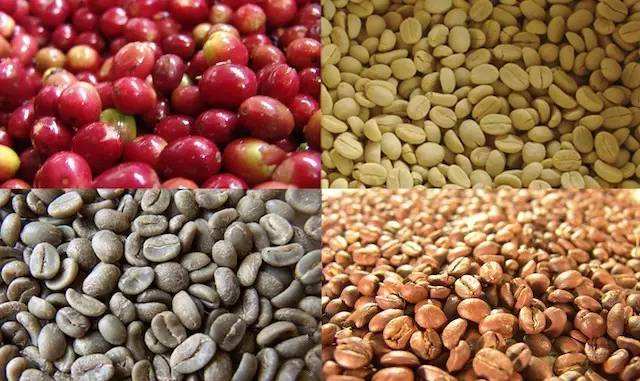Light baking of Costa Rican coffee beans cinnamon roasted boutique coffee how to brew beans by hand
Follow the caf é (Wechat official account vdailycom) and found that Beautiful Cafe opened a small shop of its own.
Costa Rican coffee
Tarrazu in Costa Rica is one of the major coffee producing areas in the world. The coffee produced is light and pure in flavor and pleasant in aroma. Costa Rica, with its fertile volcanic soil and good drainage, is the first country in Central America to grow coffee and bananas for commercial value. Coffee and bananas are the country's main exports. Coffee was introduced into Costa Rica from Cuba in 1729. Today, its coffee industry is one of the well-organized industries in the world, with a yield of 1700 kg per hectare. Costa Rica, with a population of only 3.5 million, has 400 million coffee trees, and coffee exports account for 25 per cent of the country's total exports. Costa Rica has also benefited from the establishment of the Central American Institute for Agricultural Research (TurrialbaoftheCentralAmericanAgriculturalResearchInstitute, referred to as IAAC) in Tarasu, which is an important international research centre.

High-quality Costa Rican coffee is called "extra hard beans". This kind of coffee can grow above 1500 meters above sea level. Altitude has always been a problem for coffee growers. The higher the altitude, the better the coffee beans, not only because the higher altitude can increase the acidity of the coffee beans and thus increase the flavor, but also because the night temperature at the higher altitude is lower, which can make the trees grow slowly, thus making the coffee beans have a stronger flavor. In addition, due to the high altitude drop caused by sufficient rainfall, is also very beneficial to the growth of coffee trees. However, while there are many advantages to growing coffee at higher elevations, the resulting additional transport costs must be taken into account, which is likely to make coffee production unprofitable. The coffee industry in Costa Rica has adopted new technologies to increase efficiency, including the use of "electric eyes" to select beans and identify coffee beans of irregular size.
Tarasu, located in the south of the country's capital, SanJos é, is one of the country's most valued coffee growers. LaMinitaTarrazu coffee is a famous local product, but its production is limited, about 72600 kilograms a year. It is grown on a piece of land called LaMinita, which is owned by nearly three generations of the McAlpine family in the UK. In fact, this land can produce more than 450 tons of coffee a year. But Tarasu Latin America coffee is grown without artificial fertilizers or insecticides, and its harvesting and selection are done by hand, in order to avoid some damage to coffee beans caused by air spray selection.
Other coffees worth mentioning are JuanVinas,PR, H.Tournon, Windmill,SHB, Montebello and SsntaRosa. Fine coffee is generally grown in Geredia and the central canyon. Another striking type of coffee is Sarchi (one of the five towns that represent Costa Rica's Coffee Road), which grows on the slopes of the PoasVolcano volcano, 53km from San Jose. Saatchi, founded in 1949, has a land area of 30770 hectares and grows sugar cane and coffee. The area is also famous for its handicrafts, attracting tourists from all over the world.
Costa Rican coffee bean producing area
The seven major coffee producing areas are as follows: the Turialva Valley, the Central Valley, the Western Valley, the three Rivers region, Brunka, Orosi, and Tarasu. Among them, the Central Valley, Tarasu and Sanhe producing areas are the most famous. In principle, the quality of coffee sloping towards the Pacific is better than that facing the Atlantic. In the two-⊙⊙ seven-year Costa Rica "extraordinary Cup" competition, the champion farm "Serobado" is located in the Tarasu producing area south of San Jose, but the Central Valley area also performed well, with two or four from the city of Naranjo, where the three Rivers District seems to have been left out.
Laminita Farm in Tarasu has established a world-class reputation for its strict quality management, covering most of the European and American markets for more than half a century, making it the most famous coffee farm in the world. "Raminita" means "small gold mine". Before the Spanish colonization, the Indians used to dig gold in the present farm location, which can be described as a blessed land. Raminita produces about 1 million pounds of coffee beans a year, and after removing the turnips (more than 70% eliminated), only 290000 pounds of high-end products are sold to the boutique market, which is not a false reputation. The coffee on the estate is famous for its sour aromas of apple and citrus, rich milk and truffles, and a delicate taste of silk, about 1200 to 1700 meters above sea level.
In addition, Sanhe District is also a famous producing area, located in the Ilasu volcano not far east of the capital.
However, in recent years, the urban area has gradually extended to the suburbs, and agricultural land has been sold to developers one after another, resulting in a sharp decline in coffee production in Sanhe District, almost half of which is contracted by Starbucks, which is not easy to buy on the market. Aquez Grass, a famous farm in this area, has been adhering to it since 1857. It has a long history, bright sour fruit, soft but not sharp, and sweet and charming taffy with nuts and flowers, which is the characteristic of coffee in this area.
Important Notice :
前街咖啡 FrontStreet Coffee has moved to new addredd:
FrontStreet Coffee Address: 315,Donghua East Road,GuangZhou
Tel:020 38364473
- Prev

Costa Rican coffee bean flavor. Is Costa Rican coffee good?
Following Cafe Review (official Wechat account vdailycom) found that Cafe Beautiful Cafe opened a small shop of Costa Rican coffee bean flavor Tarrazu of Costa Rica is one of the major coffee producers in the world, the coffee produced is light and pure in flavor and pleasant in aroma. Costa Rican coffee has full particles, ideal acidity and unique strong flavor. Costa Rican coffee is good.
- Next

Costa Rican coffee. How about Costa Rican coffee?
Following Cafe (official Wechat account vdailycom) found that the coffee beans produced in the high latitudes of Costa Rica are famous in the world, full-bodied, mild but extremely sour, and the coffee beans here are carefully processed, which is why there is high quality coffee. In the brief history of coffee, the earliest time of introduction of coffee was in CR official funding.
Related
- Detailed explanation of Jadeite planting Land in Panamanian Jadeite Manor introduction to the grading system of Jadeite competitive bidding, Red bid, Green bid and Rose Summer
- Story of Coffee planting in Brenka region of Costa Rica Stonehenge Manor anaerobic heavy honey treatment of flavor mouth
- What's on the barrel of Blue Mountain Coffee beans?
- Can American coffee also pull flowers? How to use hot American style to pull out a good-looking pattern?
- Can you make a cold extract with coffee beans? What is the right proportion for cold-extracted coffee formula?
- Indonesian PWN Gold Mandrine Coffee Origin Features Flavor How to Chong? Mandolin coffee is American.
- A brief introduction to the flavor characteristics of Brazilian yellow bourbon coffee beans
- What is the effect of different water quality on the flavor of cold-extracted coffee? What kind of water is best for brewing coffee?
- Why do you think of Rose Summer whenever you mention Panamanian coffee?
- Introduction to the characteristics of authentic blue mountain coffee bean producing areas? What is the CIB Coffee Authority in Jamaica?

